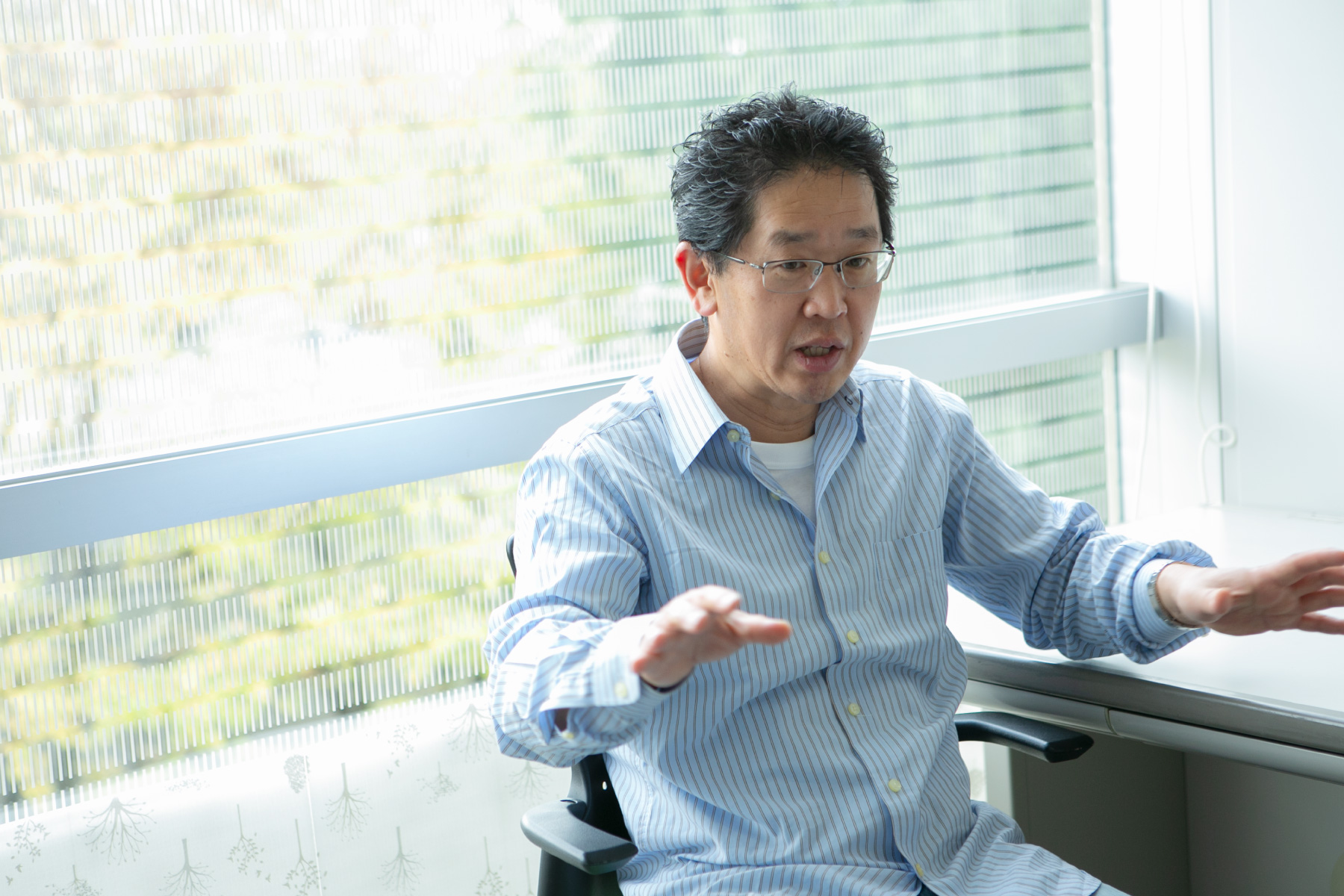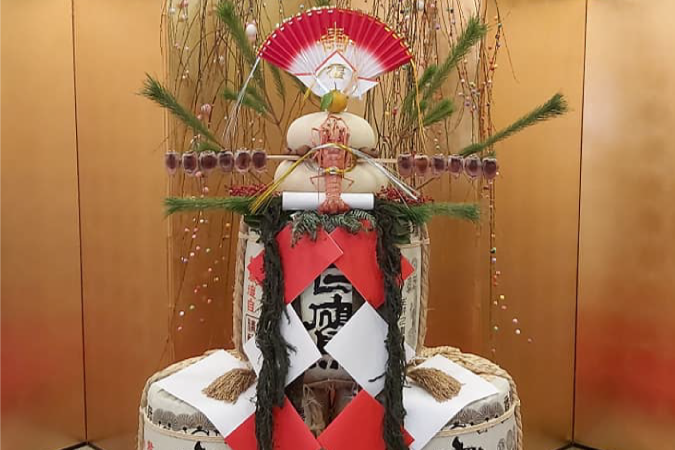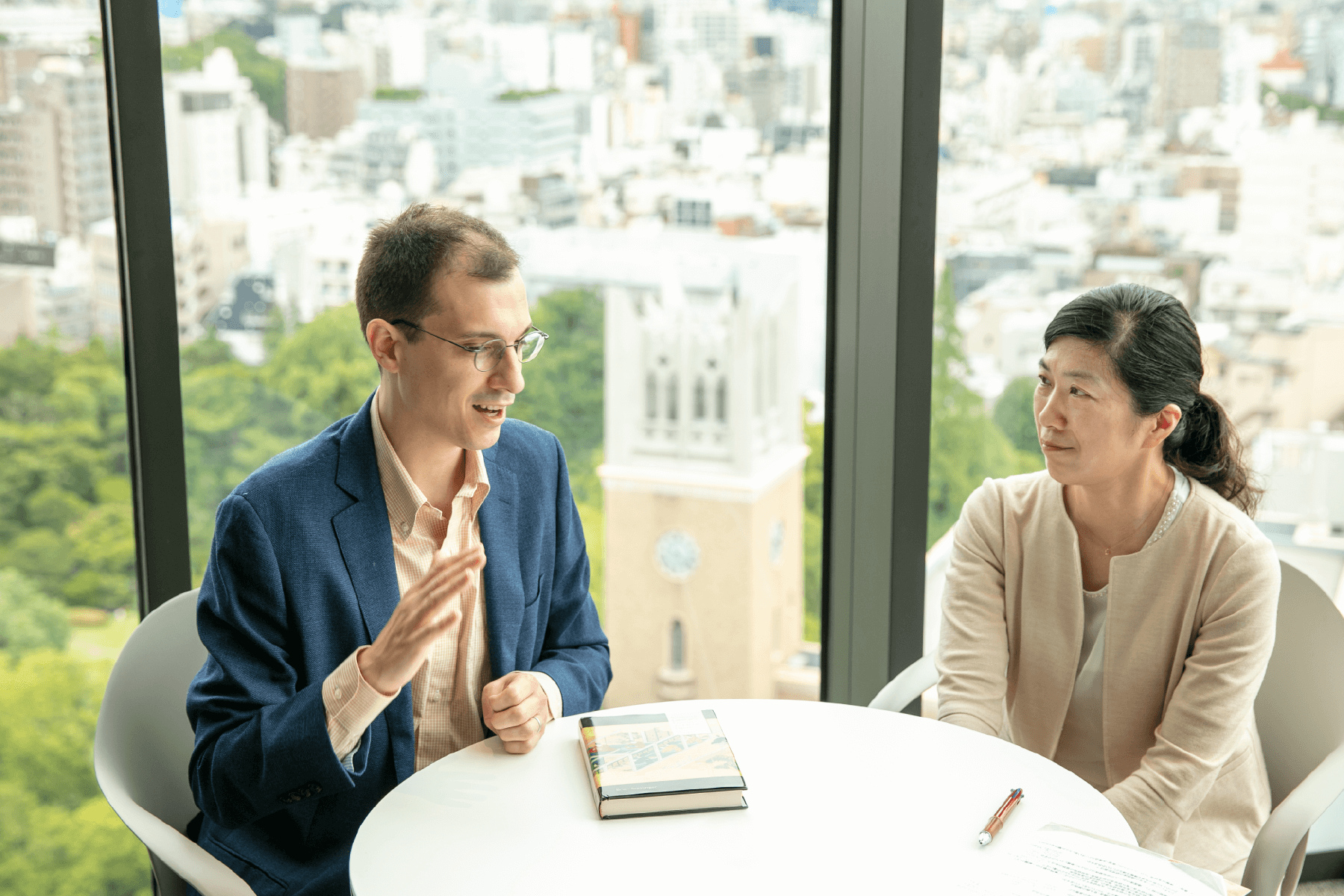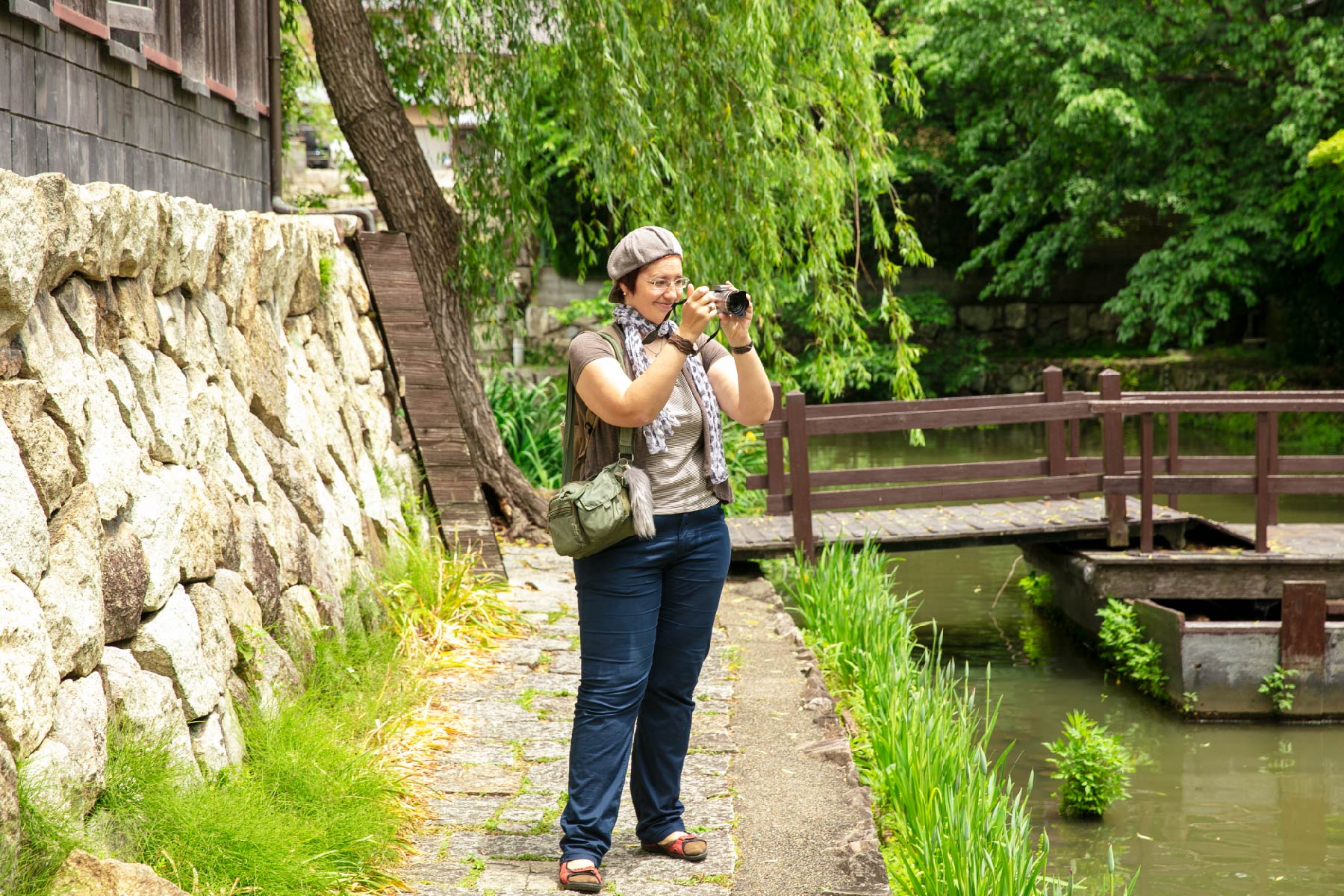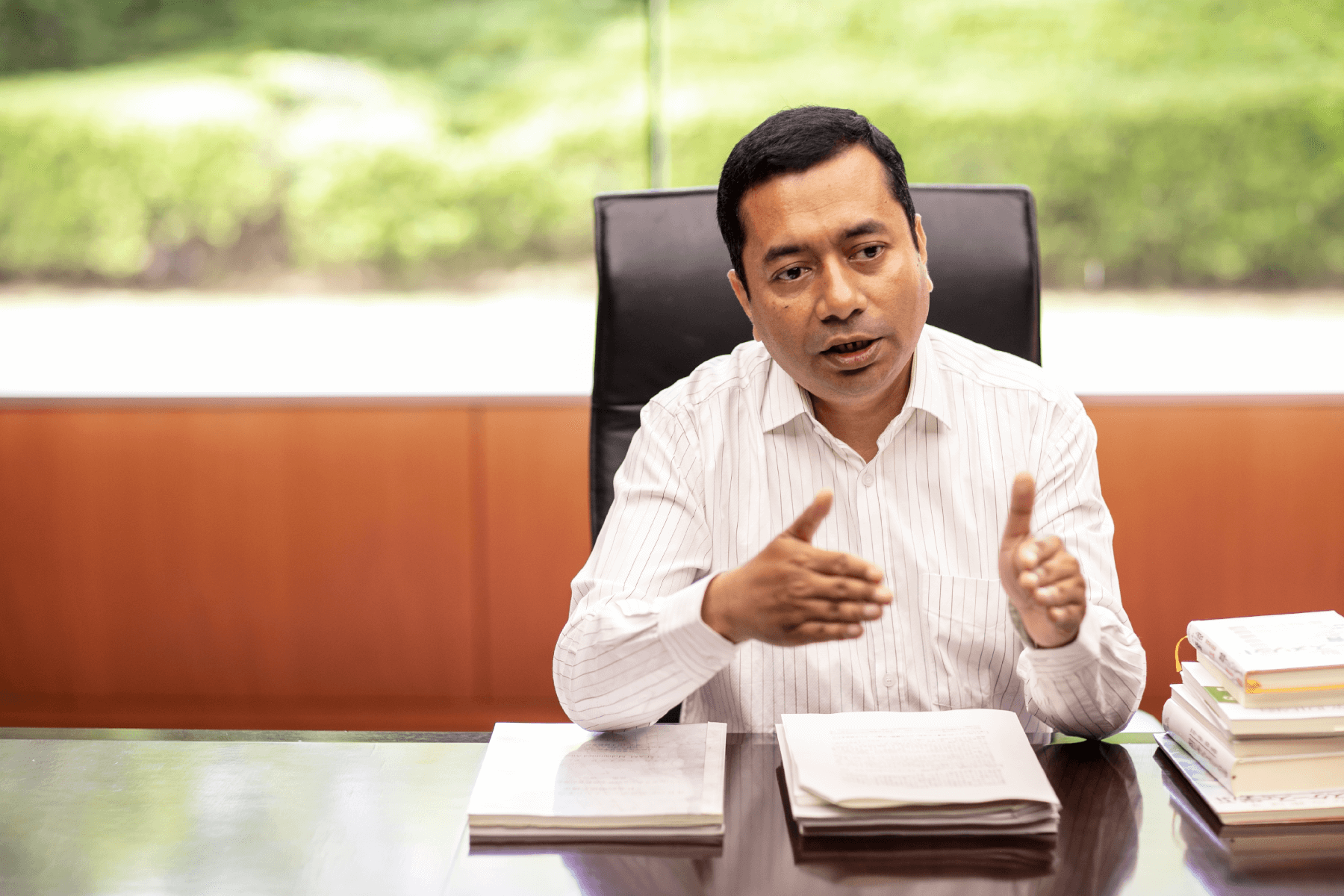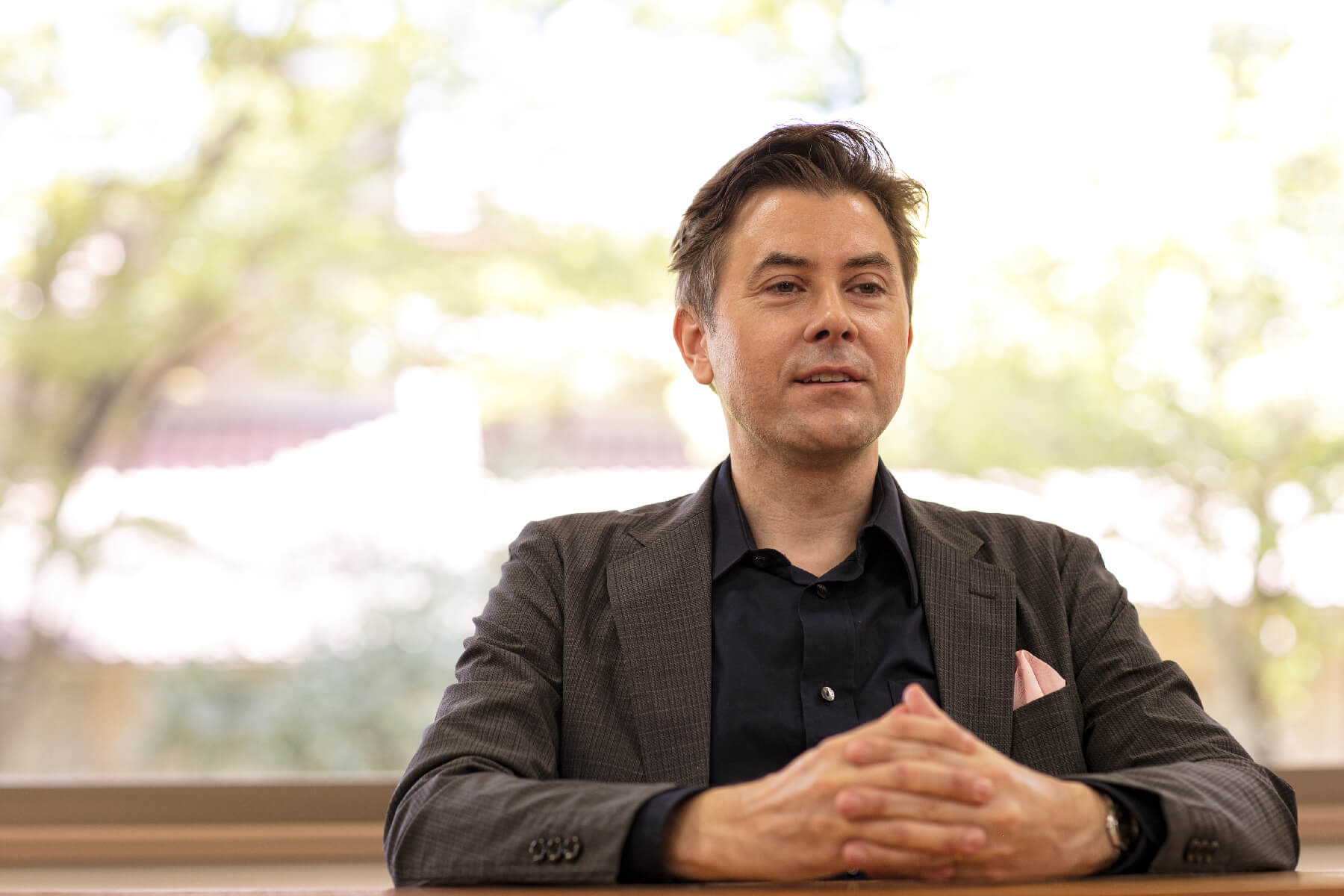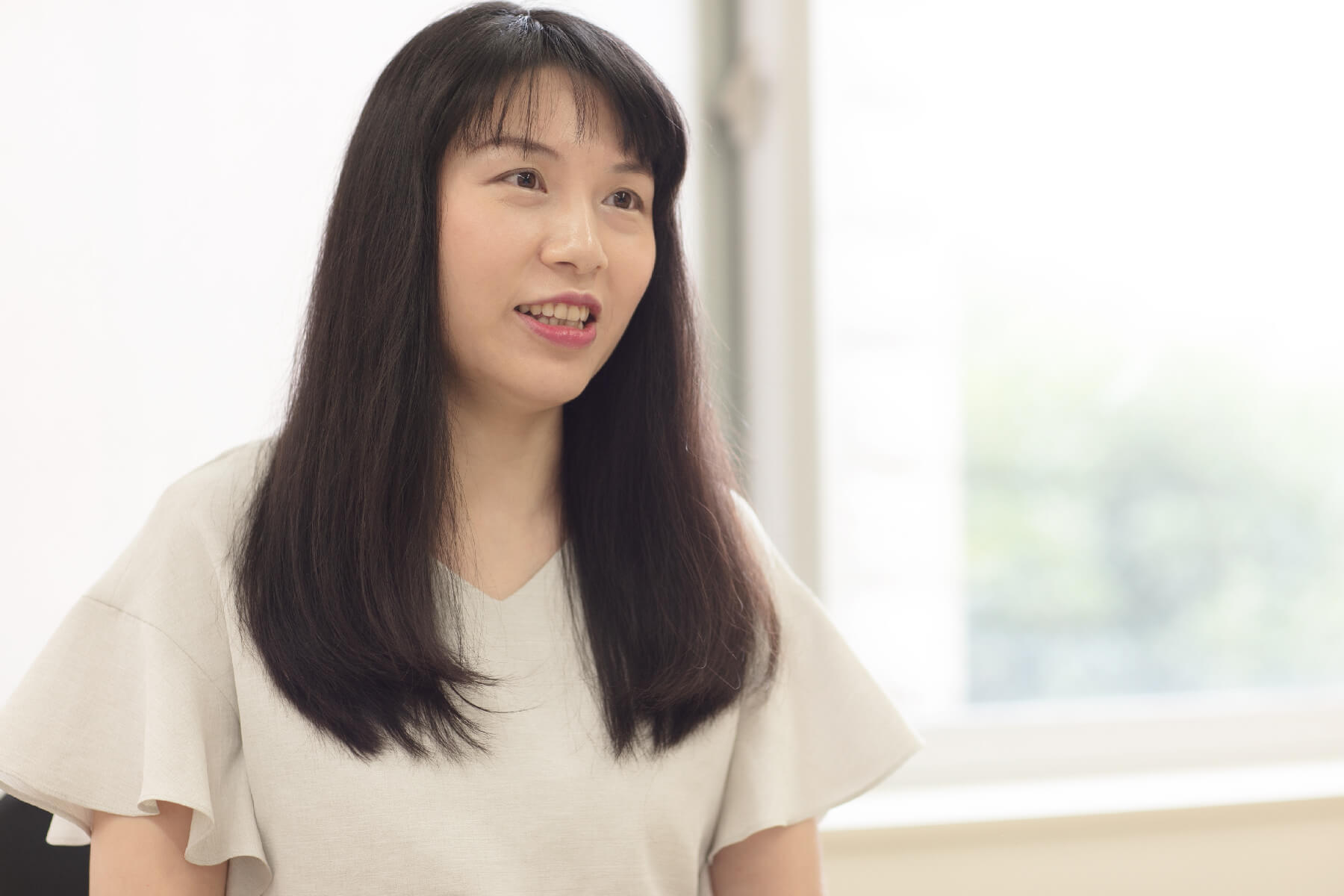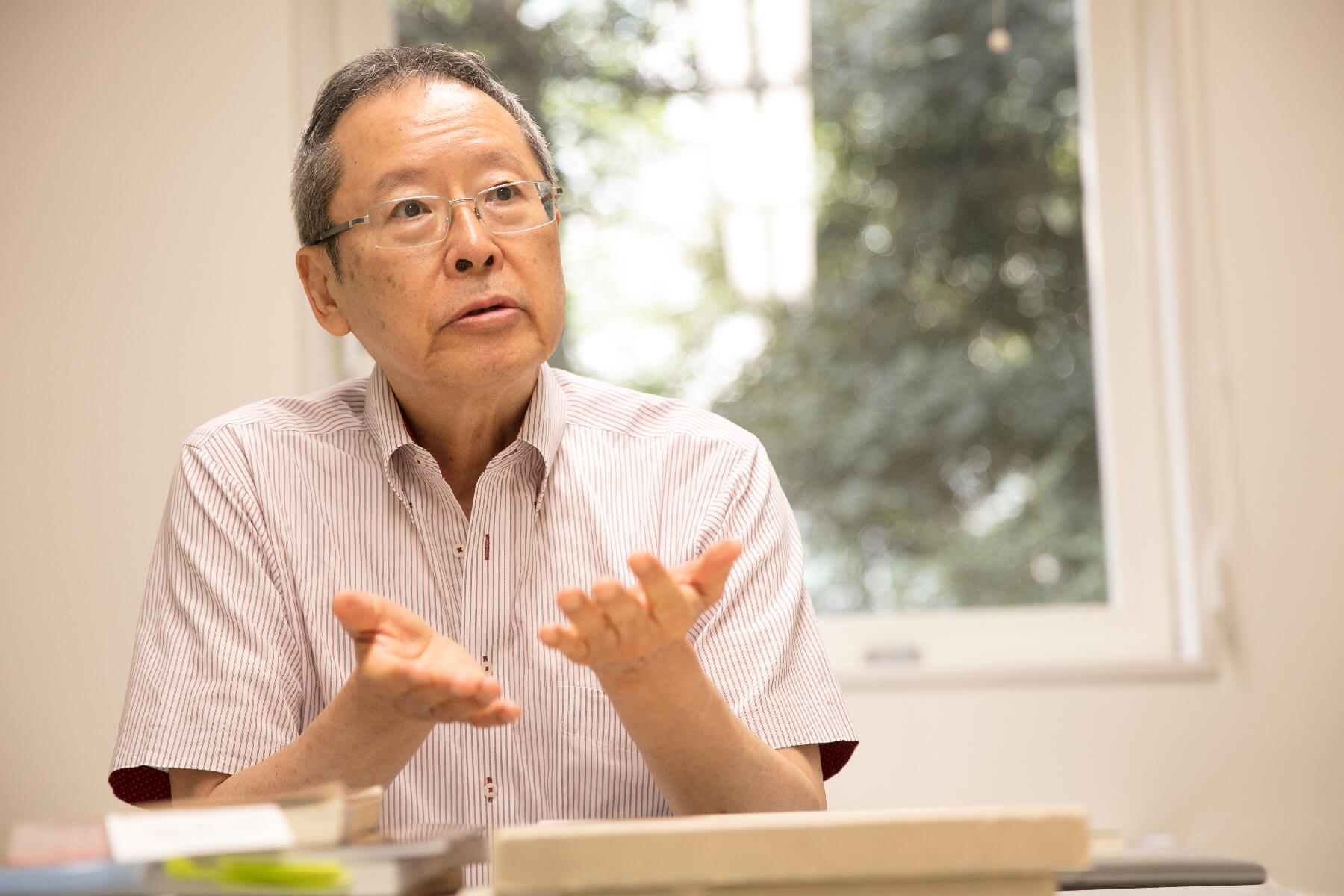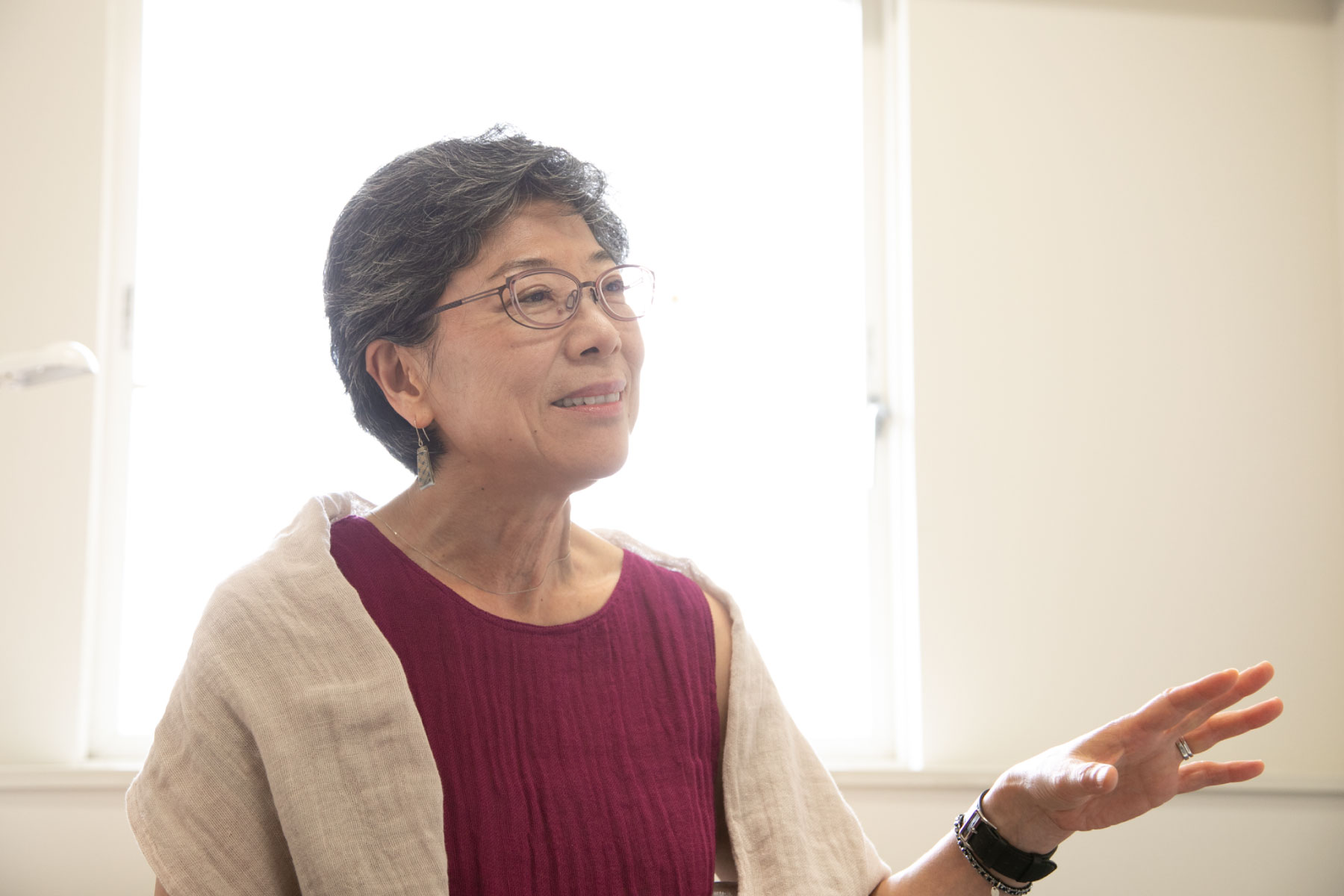
Oration is language-driven performance
Professor Noda, why did you choose to study the International Speech Contest in Japanese?
I currently teach Japanese at Ohio State University in the U.S., and we have our own Japanese language speech contest here in the state of Ohio. I serve as a Director of the organization that sponsors the contest, and my students participate in it. Being in this environment led me to think about what exactly is being presented when we deliver a speech in a foreign language. Speech contests for non-Japanese have been around for a long time in Japan, and watching some of these speeches online has steadily piqued my interest in this question.
When I teach Japanese to students in my classes, I focus on more than just the language itself; I look at how it used in the social and cultural milieu of Japanese daily life. More than simply teaching vocabulary and grammar, I treat linguistic activity as a “performance.”
The oration delivered at a speech contest is the very definition of language-driven performance. A notable aspect of the International Speech Contest in Japanese, which takes place in Japan, is that the audience is almost entirely Japanese. Thus, the speech venue becomes a point of intersection between Japanese and non-Japanese cultures. According to the “third space” theory, when people from different cultural backgrounds come together to achieve the same goal, the time and place in which their cooperation takes place is known as a “third space.” It occurred to me that such a space is created during this speech contest.
I didn’t realize that Japanese speech contests for non-Japanese speakers had been around for so long in Japan.
This particular speech contest was first held in 1960. It began four years prior to the Tokyo Olympics and has been held every year since. On a personal level, I reflected on the fact that this contest has been around for as long as I have been alive. I tried to imagine what perspectives non-Japanese speakers had of Japanese society over all those years, what they talked about. This sparked my interest to go back and start from the beginning.
Were you able to find existing resources and materials from those early years?
Sadly, no materials exist from the first contest. There are some published materials left over from the second through fourth contests, and we have audio and video recordings from 1964—the year of the Tokyo Olympics—onward. Since I was studying these speeches as performances, I wanted to have audio at the very least. Thus, my research encompassed the contests that took place between 1964 and 2017. Every year there are around twelve participants, but during the half-year I spent in Japan conducting my research I limited my focus to the speeches of the top two participants selected by the audience and judging panel. I viewed, transcribed and then analyzed the content of each speech.
It was really lonely work, as I had to watch and listen to the videos over and over in order to check various things. I would find myself sitting there all alone in the lab suddenly cackling with laughter or crying. Then I would think, “Why did I laugh just now?” Or, “What made me tear up like that?” I was studying myself studying the speeches. I did so much typing at my computer that I developed tendonitis. Nevertheless, the experience was an incredibly interesting one.
I watched the recent contest speeches online, and I was surprised at the participants’ Japanese fluency and eloquence, and at how moving their speeches were.
Oh, absolutely. There are so many truly valuable insights that we can glean by listening to non-Japanese perspectives… no, which can only be derived from a non-Japanese perspective. When you look at the speeches written out, you find no grammatical mistakes and their vocabulary is wonderful. It’s obvious that they are being coached by someone, but there is no doubt that the message is their own, and at the contest venue, they are the ones delivering it. Their inflections, speaking style, expressions, gestures, clothing… It truly is a performance.
Did you discover anything from analyzing the speeches?
I learned a variety of things. One was how the topic of culture was addressed in the speeches. Based on a statistical overview of all speeches, I found that the overwhelming majority provided opinions related to Japanese behavioral culture. Common examples include Japanese thoughtfulness, insularity and prejudice. Although the topics discussed varied from era to era, what really changed over the years is the speakers’ perspectives on Japan. From the 1960s until the early 1970s, somewhat critical perspectives were common: “Japan should be more like this,” or “This is what Japan lacks.” A lot of the opinions that the speakers gave can still be heard today. We can think of this era as one in which the orators were speaking from a somewhat dominant position vis-a-vis their audience. When we get to the 80s, when Japan was the one delivering economic aid to various countries, we see an increase in the number of speeches voicing expectations or exhortations for Japan: “I would like Japan to learn more about the countries it is helping,” or “I am grateful for Japan’s help, but I would like Japan to think about…” etc. In the years since 2000, positive perspectives praising, expressing affinity for, or extolling the appeals of Japan have been common. The speech that sticks out most in my mind is one that was delivered at the 58th contest and which discussed Japanese hospitality. The speaker did a good job of conveying the message that, while Japanese hospitality is wonderful, people should strive to be more sincere with others. You really can’t appreciate how well this message was delivered without watching the actual performance.

Techniques for drawing in the audience to transport them to another dimension
What are the criteria for judging this speech contest?
A comprehensive assessment is made based on factors such as how the content and arguments of the speech support the main theme; how grammar, intonation and word selection are utilized; and how the speech itself is delivered.
I actually took part as a judge in the 59th contest, which was held this year. I had been in contact with the International Education Center, which is the sponsor of the International Speech Contest in Japanese, from before I came to Japan to do my research—with which they were a great help. It was during this back and forth that they sort of casually asked if, perhaps, I might be interested in participating as a judge… It was the first time I’d seen the contest live, and it was a tremendously valuable opportunity. Japanese is the common language for all of the participants, and I got to see all of the interactions and discussions that took place. It gave be a real sense of the important role that this contest plays in the service of cultural exchange.
Is there anything in particular that stands out about the speeches that were selected as the best?
What I noticed was that the best speeches used techniques that “pull” in the audience. This boils down to the use of memorable quotations that help create a performance that captures the audience’s heart.
In this day and age, we make our presentations using PowerPoints full of pictures and videos, but an orator can’t do that. Instead, he or she can use “pulling” techniques to create a performance within a performance that transports the audience to another dimension.
For example, orators at speech contests make clever use of advertising slogans. “It’s okay to be a bit naughty,” or “A difference you’ll recognize,” etc. When the Japanese audience hears these catchphrases, it transports them back to memories from their past. Such techniques are embedded within the larger speech and their effect is fantastic.
One that really moved me was in a speech delivered by a Filipino student in 2015. She had a beautiful voice and spoke in such a calm, measured tone. She began her speech by quoting a poem about rain in Japan and used it to segue into a story about her own, similar experience with rain in Japan. At the moment she transitioned her story, the grammar she used also transitioned from being polite and formal to being personable and familiar. In a sense, at this point she became a person narrating a literary work yet to be written. The audience was transported to the world as it might be in the future. I too was drawn in and captivated by her theatrical storytelling.

Going into Japanese language education in order to pay the bills
What was it that motivated you to enter the field of Japanese language education in America?
I went to America when I was a high school student, and I stayed there through university, where I studied food science. However, in my sophomore year my parents returned to Japan and told me to come back with them. I said “no,” and thus remained in America on my own. At the time, the exchange rate was still 360 yen to the dollar, which meant that my parents weren’t able to provide me with much financial support—so I talked with a professor in the Japanese Department about getting part-time work. This led to me working a Japanese language teaching assistant. These days the teaching assistants are all graduate students, but back then Japanese language education was still in its infancy, meaning that an undergraduate like me could be hired.
So you started teaching Japanese to pay the bills?
Becoming a teaching assistant exempted me from tuition fees. Something you come to realize when you teach Japanese is just how incredibly structured the language is. It is well-ordered and easily learned. However, in the context of Japanese culture, all sorts of complicated conventions come into play. For the first time in my life, I became clearly aware of the dual nature embedded within Japanese. I found it incredibly fascinating.
Did you continue studying food science while you were teaching Japanese?
Yes, I even continued into graduate school with food science. Ultimately, though, I chose to teach Japanese full-time, which took me to graduate school for linguistics. While I was pursuing my doctorate, one of my former Japanese pedagogy teachers, Professor Elanor Jordan, contacted me about revising some Japanese teaching materials—so, I ended up helping her with that.
I found the experience of working on those materials to be quite stimulating, and the textbooks that we made went on to sell extremely well.
Over the course of your career teaching Japanese, do you feel that anything has changed in your field?
When I first started teaching, it was nothing but middle-aged guys in graduate school who were learning Japanese. I was just this teeny-tiny Japanese undergraduate much younger than them, and I remember a concerned Professor Jordan saying to me, “Make sure you go into that classroom and take control.” Then, two years later, her advice became, “It’s okay to smile, you know…” I was so determined not to be a pushover to the students that I had forgotten how to smile.
These days there are lots of undergraduates learning Japanese, and they all know a great deal about Japan. A lot of students start out learning Japanese because they’re interested in anime and Japanese pop culture, but over time they start to realize that Japanese could be useful to their future careers.
During the half-year that you spent back in Japan to do your research, did you feel that the country had changed in any way?
For several years now I’ve noticed that written rules and directions show up in more and more places, and this trend is only increasing. For example, when you look at a bag of candy, you see an arrow on it pointing to the top which is accompanied by the instructions: “Open from here.” When you open the bag, each of the tiny candies inside are themselves individually wrapped in bags upon which “Open from here” is written again. Ziploc-type bags bear messages telling you to “Make sure to seal up and store the bag after use,” and instant miso soup containers warn, “Hot water—take care when handling.” The list goes on and on. I think, “Isn’t this all just common sense?” (Laughs). In America the motivation for doing this would be to protect yourself from being sued, but in Japan, I think this trend is spurred on by the characteristic mindset of Japanese “thoughtfulness.”
It’s something that others have pointed out in me, as well. One time, when I was hosting a party where the guests could make their own hand-rolled sushi, I made sure to first carefully demonstrate and explain how it should be done. An American friend of mine who is thoroughly familiar with Japanese culture remarked, “Yup, you really are Japanese…” What she meant was, “You don’t have to explain every little detail. Everyone can figure it out for themselves.” However, I’m Japanese, so I felt that I have to teach them!
Earlier you described speech contests as a “third space” where different cultures come into contact; have you, yourself, had much experience with third spaces? What is important for ensuring that interaction within such third spaces goes well?
The first thing, of course, is to have a good understanding of one another’s cultures. Then, you must make sure not to approach the interaction with an attitude that one culture is better than the other. Rather, you must think about it as, “This culture does things this way, while that culture does things this other way. How about we find the middle ground?” This sort of productive conversation is possible when the focus of all parties concerned is oriented in the same direction. When you focus only on what you stand to gain or lose from the interaction, it will be difficult to achieve anything other than conflict. If you can get everyone focused on the same goals and objectives, then the interaction can be truly productive.
(Interview conducted in August 2018)




